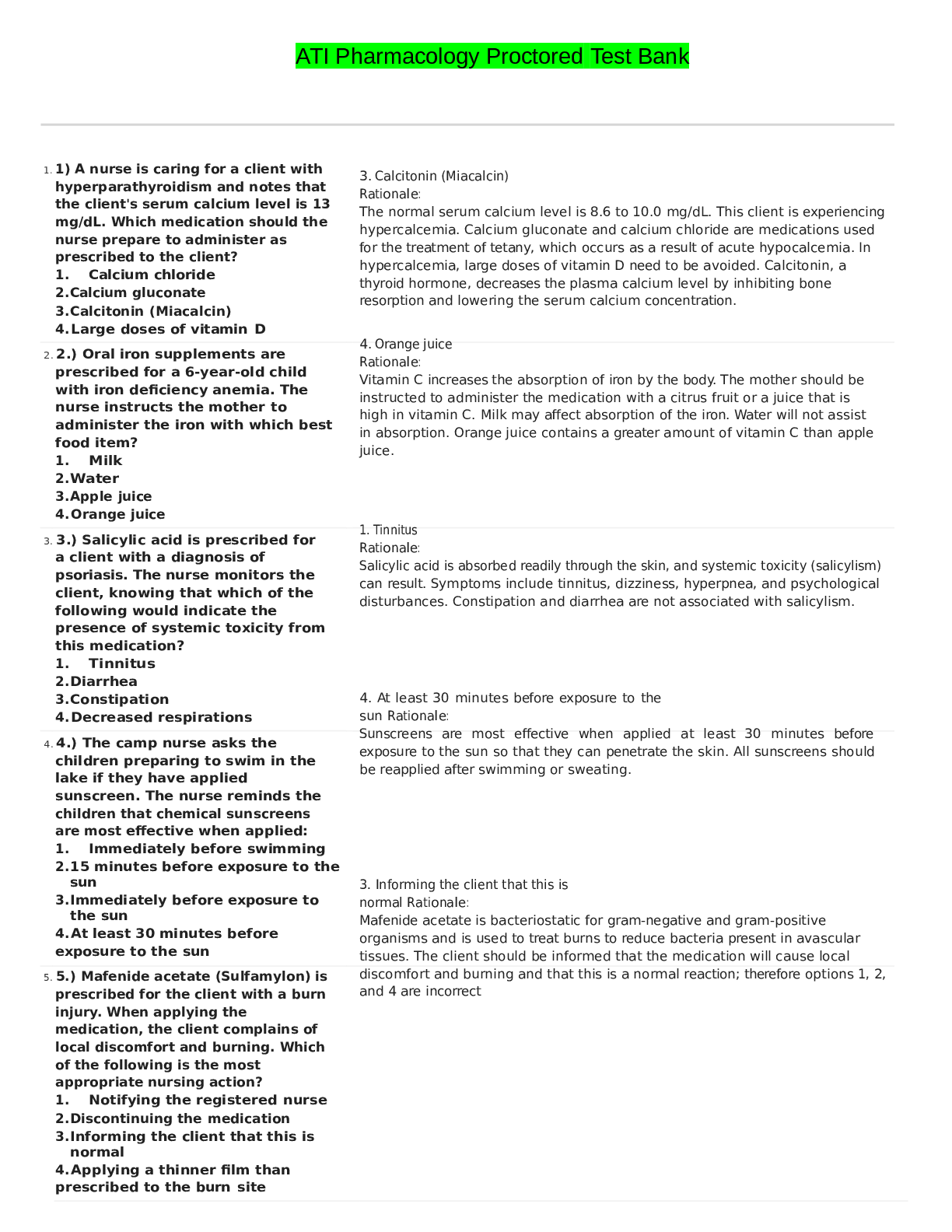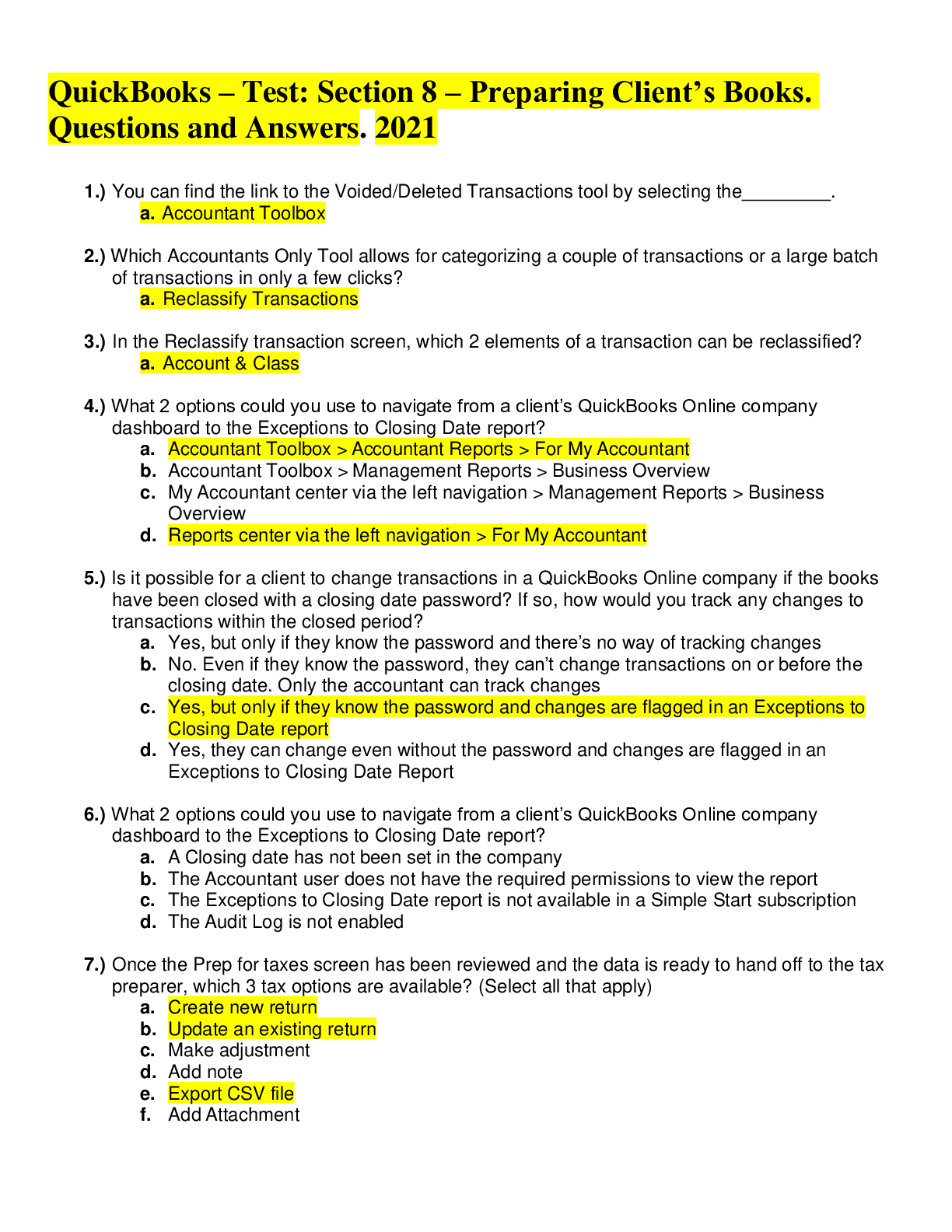Economics > QUESTIONS & ANSWERS > Clayton State University ECON 6100 Chapter 9 Market Structure and Long Run Equilibrium. 73 Questions (All)
Clayton State University ECON 6100 Chapter 9 Market Structure and Long Run Equilibrium. 73 Questions and Answers
Document Content and Description Below
1. All of these are characteristics of a competitive industry, except: a. Many substitutes b. No barriers to entry c. Homogenous product d. Little or no information on rivals’ products TOPICS... : Section 1: Competitive Industries 2. Which of the following markets are closest to perfectly competitive a. The market for smart phones b. The market for generic pharmaceuticals c. The market for sport shoes d. The market for fast food TOPICS: Section 1: Competitive Industries 3. A firm in a ______________ faces a __________ demand curve. a. perfectly competitive market; perfectly inelastic b. perfectly competitive market; perfectly elastic c. monopoly market; perfectly elastic d. monopoly market; horizontal TOPICS: Section 1: Competitive Industries 4. In a perfectly competitive market industry, firm’s prices are equal to a. Average revenue b. Marginal revenue c. Both a and b d. None of the above TOPICS: Section 1: Competitive Industries 5. In the long-run, a perfectly competitive firm will achieve a. An average rate of return b. Above average profits c. Losses d. Economic Profits TOPICS: Section 1: Competitive Industries 6. A perfectly competitive firm has a. A perfectly elastic demand for its products b. A perfectly inelastic demand for its products c. A downward sloping demand for its products d. None of the above TOPICS: Section 1: Competitive Industries 7. If a firm in a perfectly competitive industry is experiencing higher than normal returns, in the long-run a. Some firms will leave the industry and price will rise b. Some firms will enter the industry and price will rise c. Some firms will leave the industry and price will fall d. Some firms will enter the industry and price will fall TOPICS: Section 1: Competitive Industries 8. A sudden increase in the market demand in a competitive industry leads to a. A market equilibrium profits higher than the original equilibrium in the short-run b. A market equilibrium profits equal to the original equilibrium in the long-run c. Both a and b d. None of the above TOPICS: Section 1: Competitive Industries 9. Once the patent for a drug in the pharmaceutical industry expires, the market for the generic equivalents a. Is usually considered competitive b. Is a monopolistic market c. Has no effect on the profits earned by the original producer d. Would not exist TOPICS: Section 1: Competitive Industries 10. In a competitive industry buffeted by demand and supply shocks, prices increase and decrease, but economic profits tend to revert to zero. Hence, profits are exhibiting a. Above-average return b. Positive earnings c. Mean reversion d. None of the above TOPICS: Section 1: Competitive Industries 11. A sudden rise in the market demand in a competitive industry leads to a. A short run market equilibrium price higher than the original equilibrium b. A market equilibrium lower than the short run price c. Entry of new firms into the market d. All of the above TOPICS: Section 1: Competitive Industries 12. A sudden rise in the market demand in a competitive industry leads to a. A short run market equilibrium price higher than the original equilibrium b. A market equilibrium higher than the short run price c. Some firms exiting the market d. All of the above TOPICS: Section 1: Competitive Industries 13. A sudden rise in the market demand in a competitive industry leads to a. A short run market equilibrium price lower than the original equilibrium b. A market equilibrium lower than the short run price c. Some firms exiting the market d. All of the above TOPICS: Section 1: Competitive Industries 14. A sudden rise in the market demand in a competitive industry leads to a. A short run market equilibrium price lower than the original equilibrium b. A market equilibrium higher than the short run price c. Entry of new firms into the market d. All of the above TOPICS: Section 1: Competitive Industries 15. A sudden fall in the market demand in a competitive industry leads to a. A short run market equilibrium price lower than the original equilibrium b. A market equilibrium price higher than the short run price c. Some firms exiting the market d. All of the above TOPICS: Section 1: Competitive Industries 16. A sudden fall in the market demand in a competitive industry leads to a. A short run market equilibrium price higher than the original equilibrium b. A market equilibrium price lower than the short run price c. Some firms exiting the market d. All of the above TOPICS: Section 1: Competitive Industries 17. A sudden fall in the market demand in a competitive industry leads to a. A short run market equilibrium price lower than the original equilibrium b. A market equilibrium price lower than the short run price c. New firms entering the market d. All of the above TOPICS: Section 1: Competitive Industries 18. A sudden fall in the market demand in a competitive industry leads to a. A short run market equilibrium price higher than the original equilibrium b. A market equilibrium price higher than the short run price c. New firms entering the market d. All of the above TOPICS: Section 1: Competitive Industries 19. A sudden decrease in the market demand in a competitive industry leads to a. A market equilibrium price higher than the original equilibrium in the short-run b. A market equilibrium price equal to the original equilibrium in the long-run c. Both a and b d. None of the above TOPICS: Section 1: Competitive Industries 20. A sudden decrease in the market demand in a competitive industry leads to a. Losses in the short-run and average profits in the long-run b. Above average profits in the short-run and average profits in the longrun c. New firms being attracted to the industry d. Demand creating supply TOPICS: Section 1: Competitive Industries 21. A sudden increase in the market demand in a competitive industry leads to a. Losses in the short-run and average profits in the long-run b. Above average profits in the short-run and average profits in the longrun c. New firms being attracted to the industry d. Both B&C TOPICS: Section 1: Competitive Industries 22. In a competitive industry a. firms produce a product or service with very close substitutes b. the firms products have a very elastic demand c. the firms have many rivals d. all of the above TOPICS: Section 1: Competitive Industries 23. In a competitive industry a. firms have no cost advantages b. some firms have cost advantages, while others do not c. all the firms have highly differentiated products d. Consumers have strong preferences across brands TOPICS: Section 1: Competitive Industries 24. In a competitive industry a. the industry has high barriers to entry b. the industry has high barriers to exit c. the industry has high barriers to entry and exit d. the industry has no barriers to entry or exit TOPICS: Section 1: Competitive Industries 25. In a competitive industry a. firms sell more if price is above marginal cost b. firms sell more is price is below marginal cost c. firms sell less if price is above marginal cost d. none of the above TOPICS: Section 1: Competitive Industries 26. In a competitive industry, the competitive firm’s profits are a. independent of the industry in which they compete b. closely linked to the industry in which they compete c. determined only by their own differentiated product d. determined solely by the inelastic demand for their product TOPICS: Section 1: Competitive Industries 27. Competitive firms can earn positive profits in the a. Long run only b. Long run and the short run c. Short run only d. All of the above TOPICS: Section 1: Competitive Industries 28. The main reason(s) firms in a competitive market cannot earn positive profits in the long run is(are) a. assets can quickly move in and out of the industry when demand fluctuates b. an increase in demand leads to entry of firms which absorb the extra demand c. a decrease in demand leads to exit of firms from the market such that there is no surplus d. all of the above TOPICS: Section 1: Competitive Industries 29. The main reason(s) monopolies can earn positive profits for a while is(are) a. assets cannot quickly move in and out of the industry when demand fluctuates b. an increase in demand does not lead to entry of firms to absorb the extra demand c. both A&B d. none of the above TOPICS: Section 1: Competitive Industries 30. In the long run, in a competitive industry a. economic profits are zero b. firms break even c. price equals average cost d. all of the above TOPICS: Section 1: Competitive Industries 31. Two cities face identical prices for their housing. City A decided to be a pollution free city “Clean town” and all the factories would locate in city B “Smogville”, we expect the prices of housing in city A “Clean town” to a. increase b. decrease c. stay the same d. none of the above TOPICS: Section 2: The Indifference Principle 32. Two cities face identical prices for their housing. City A decided to be a pollution free city “Clean town” and all the factories would locate in city B “Smogville”, we expect the prices of housing in city B “Smogville” to a. increase b. decrease c. stay the same d. none of the above TOPICS: Section 2: The Indifference Principle 33. Two cities face identical prices for their housing. City A decided to be a pollution free city “Clean town” and all the factories would locate in city B “Smogville”, in equilibrium, we expect to see a. a compensating differential between the prices of housing between the two cities b. the prices of housing in both the cities to be identical c. The prices of housing in B to be higher d. All of the above TOPICS: Section 2: The Indifference Principle 34. Two cities A&B are deciding upon joint pollution laws. Right now they both face identical prices for their housing. If they decide that city A is to be a pollution free city “Clean town” and all the factories would locate in city B “Smogville”, in the long run, we expect to see a. Asthmatics moving to Smogville b. Poorer families moving to Cleantown c. Residents in both the cities relocating based on their tolerance for pollution d. Residents in both the cities being worse off TOPICS: Section 2: The Indifference Principle 35. Two cities A&B are deciding upon joint pollution laws. Right now they both face identical prices for their housing. If they decide that city A is to be a pollution free city “Clean town” and all the factories would locate in city B “Smogville”, in the long run, we expect to see a. Asthmatics moving to Cleantown b. Poorer families moving to Smogville c. Residents in both the cities relocating based on their tolerance for pollution d. All of the above TOPICS: Section 2: The Indifference Principle 36. The concept of mean reversion is defined by a. the tendency of profits to revert to zero b. the tendency of costs to revert to zero c. the tendency of economic profits to revert to zero d. the tendency of profits to revert to negative TOPICS: Section 2: The Indifference Principle 37. The indifference principle states that a. If an asset is mobile, then in the long run, it will be indifferent about where it is used b. In the long run, a mobile asset will make the same profit, no matter where it goes c. If an asset is mobile, then in the long run, it would stay with the first user d. Only A&B TOPICS: Section 2: The Indifference Principle 38. According to the indifference principle, housing prices a. tend to converge over time b. tend to leave individuals indifferent about where they live c. only tend to be different to compensate individuals for differences in living conditions d. only B&C TOPICS: Section 2: The Indifference Principle 39. In the long run, if housing prices are higher in San Diego, California, versus Nashville, Tennessee, then a. individuals would move to Nashville b. individuals would move San Diego c. there would be no movement across the two cities, since the difference in prices is pure compensation for difference in living conditions d. Both B&C TOPICS: Section 2: The Indifference Principle 40. According to the indifference principle, in the long run if being a teacher is more desirable than being a garbage collector, a. teachers would be paid a relatively higher salary than garbage collectors b. teachers would be paid a relatively lower salary than garbage collectors c. teachers and garbage collectors would both be paid the same wages d. none of the above TOPICS: Section 2: The Indifference Principle 41. Firemen generally are paid higher wages because a. they are usually highly educated b. they are usually working under riskier conditions c. they are working long and uncertain hours d. both B&C TOPICS: Section 2: The Indifference Principle 42. Critical care surgeons get paid higher salaries than family doctors because a. they usually work under highly stressful conditions b. they usually have to get longer training c. they usually work uncertain hours d. all of the above TOPICS: Section 2: The Indifference Principle 43. Robert, as a baker has to work long hours and doesn’t get much time with his family. Robert’s boss, in order to keep Robert working at the bakery would soon have to offer him a a. positive compensating differential b. negative compensating differential c. nothing can make Robert stay d. none of the above TOPICS: Section 2: The Indifference Principle 44. In equilibrium, high risk stocks would typically be accompanied by a. low returns b. no returns c. high returns d. no sales-no one would buy risky stocks TOPICS: Section 2: The Indifference Principle 45. Low risk stocks are usually accompanied by a. low returns b. no returns c. high returns d. no sales-no one would buy low risk stocks TOPICS: Section 2: The Indifference Principle 46. In equilibrium the typical investor __________ a. prefers high risk assets to low risk assets b. prefers low risk assets to high risk assets c. is indifferent between buying low and high risk assets d. does not stay in the market TOPICS: Section 2: The Indifference Principle 47. In equilibrium, low risk assets earn a _______return than high risk assets a. higher b. lower c. similar d. none of the above TOPICS: Section 2: The Indifference Principle 48. A risk premium is a. the difference between the earnings of a low risk asset and a high risk asset b. premium paid to a security holder to compensate him for bearing a higher risk c. both A&B d. none of the above TOPICS: Section 2: The Indifference Principle 49. A compensating wage differential is a. the difference between the wage of an individual working in favorable conditions and the wage of an individual working in unfavorable conditions b. compensation paid to an individual for working in a less desirable environment c. premium paid to a security holder to compensate him for bearing a higher risk d. Only A&B TOPICS: Section 2: The Indifference Principle 50. An investor has to choose between stocks A&B, each selling for $10. Stock A, can either increase in price to $12, with a 50% probability or stay at $10 with a 50% probability. Stock B can either increase in price to $15 with a 50% probability or go down to $7 with a 50% probability. Which of the stocks would the investor choose a. Stock A b. Stock B c. None of the stocks d. The investor would exit the market TOPICS: Section 2: The Indifference Principle 51. Jim has a choice between two jobs. Job A would pay him $15 an hour with certainty, and the job B is commission based where he could earn $12, with a 50% probability and $18 with a 50% probability. Which job would he choose? a. Job A b. Job B c. Neither of the jobs d. He would choose to exit the labor market TOPICS: Section 2: The Indifference Principle 52. Alan is offered a gamble. Heads he wins $100, tails he wins $20. If the game costs $60, would he play? a. Yes he would play since the expected value is equal to the price of the play b. Yes he would play since the expected value of the play is higher than the price of the play c. No he would not play since the price of the play is higher than the expected value d. No he would not play since this is a fair bet and he is not being offered any risk premium TOPICS: Section 2: The Indifference Principle 53. Which of the following is least like a monopoly a. Twitter b. YouTube c. Facebook d. Google TOPICS: Section 3: Monopoly 54. A monopoly firm is a ______________ and faces a __________ sloping demand curve. a. Price taker; horizontal b. Price maker; horizontal c. Price maker; downward d. Price taker; downward TOPICS: Section 3: Monopoly 55. Profits of a monopoly are driven to zero a. Immediately in the short-run as assets freely move from low-valued uses to high-valued uses instantly b. In the long run because the demand curve becomes more inelastic c. In the long run because the assets eventually move from low to high valued use d. In the short run because the demand curve becomes more elastic TOPICS: Section 3: Monopoly 56. Lipitor, a heart medication with few substitutes, should have an own-price elasticity of demand that is: a. Relative elastic b. Relatively inelastic c. Perfectly inelastic d. Perfectly elastic TOPICS: Section 3: Monopoly 57. A new cure for Toenail fungus is discovered for individuals resistant to the original treatment. At this point the firm producing this drug a. Could be considered a monopoly b. Would be protected from entry by patents c. Would be facing many new entries in the market d. Only A&B TOPICS: Section 3: Monopoly 58. Nike faces a more__________ demand for its products than a shoe polish producer. a. inelastic b. elastic c. perfectly elastic d. perfectly inelastic TOPICS: Section 3: Monopoly 59. Monopoly firms manage to earn positive profits, even in the long run because a. they have no close substitutes b. there are high barriers of entry to the market c. they have a cost advantage difficult to duplicate d. all of the above TOPICS: Section 3: Monopoly 60. Which of the following cannot be classified as a market structure? a. Perfect Competition b. Monopoly c. All of the above d. None of the above TOPICS: Section 3: Monopoly 61. In the short-run, a monopoly is most likely to achieve a. An average rate of return b. Above average profits c. Economic Profits d. Both B&C TOPICS: Section 3: Monopoly 62. In the long-run, a monopoly is most likely to achieve a. An average rate of return b. Above average profits c. Economic Profits d. Both B&C TOPICS: Section 3: Monopoly 63. A market tends to be monopolistic if a. The good has too many substitutes b. The good has very few substitutes c. There are too many rivals d. The good has too few complements TOPICS: Section 3: Monopoly 64. A monopoly has a. A perfectly elastic demand curve b. A perfectly elastic supply curve c. An inelastic demand curve d. A less elastic demand curve than a competitive firm TOPICS: Section 3: Monopoly 65. A monopoly has a. A perfectly elastic demand curve b. A perfectly elastic supply curve c. An inelastic demand curve d. A more elastic demand curve than a competitive firm TOPICS: Section 3: Monopoly 66. All these are characteristics of a monopoly except, a. There is one seller of the product b. Has few substitutes c. Controls a large share of the market d. Controls a small share of the market TOPICS: Section 3: Monopoly 67. A small town in West Texas has one gas station. If the price of oil increases, the price of gas that the station charges will most likely a. increase. b. decrease. c. remains the same. d. may increase or decrease. TOPICS: Section 3: Monopoly 68. Monopolies can earn positive profits a. In the long run only b. Until they disappear due to new entry c. In the short run only d. None of the above TOPICS: Section 3: Monopoly 69. In a monopoly a. the industry has high barriers to entry b. the industry has high barriers to exit c. the industry has high barriers to entry and exit d. the industry has no barriers to entry or exit TOPICS: Section 3: Monopoly 70. In the long run, a monopoly’s a. economic profits are zero b. economic profits are negative c. economic profits are positive d. demand is perfectly inelastic TOPICS: Section 3: Monopoly 71. Generic Drug Industry Dynamics When a brand name drug’s patent protection expires, many generic producers are usually ready to enter the market. These firms’ products are close substitutes, they have similar production technologies, the regulatory hurdles to enter are not so great, and, within a few months, there are plenty of rivals. What would you predict for the profitability during these first few months after generic drug entry? 72. Brand Name Drug Industry Dynamics Market approval in the US for new pharmaceutical products is a long, arduous, and expensive process. Once approved, patent protection keeps close substitute products from entering for some years. If the demand for a particular product is stable, what would you predict for the profitability after approval and prior to patent expiration? 73. MBA Degree Programs Every year various business magazines rank the quality of the different MBA programs. Why don’t all prospective students flock to the highest ranked program? [Show More]
Last updated: 1 year ago
Preview 1 out of 13 pages
.png)
Reviews( 0 )
Document information
Connected school, study & course
About the document
Uploaded On
Apr 16, 2022
Number of pages
13
Written in
Additional information
This document has been written for:
Uploaded
Apr 16, 2022
Downloads
0
Views
54

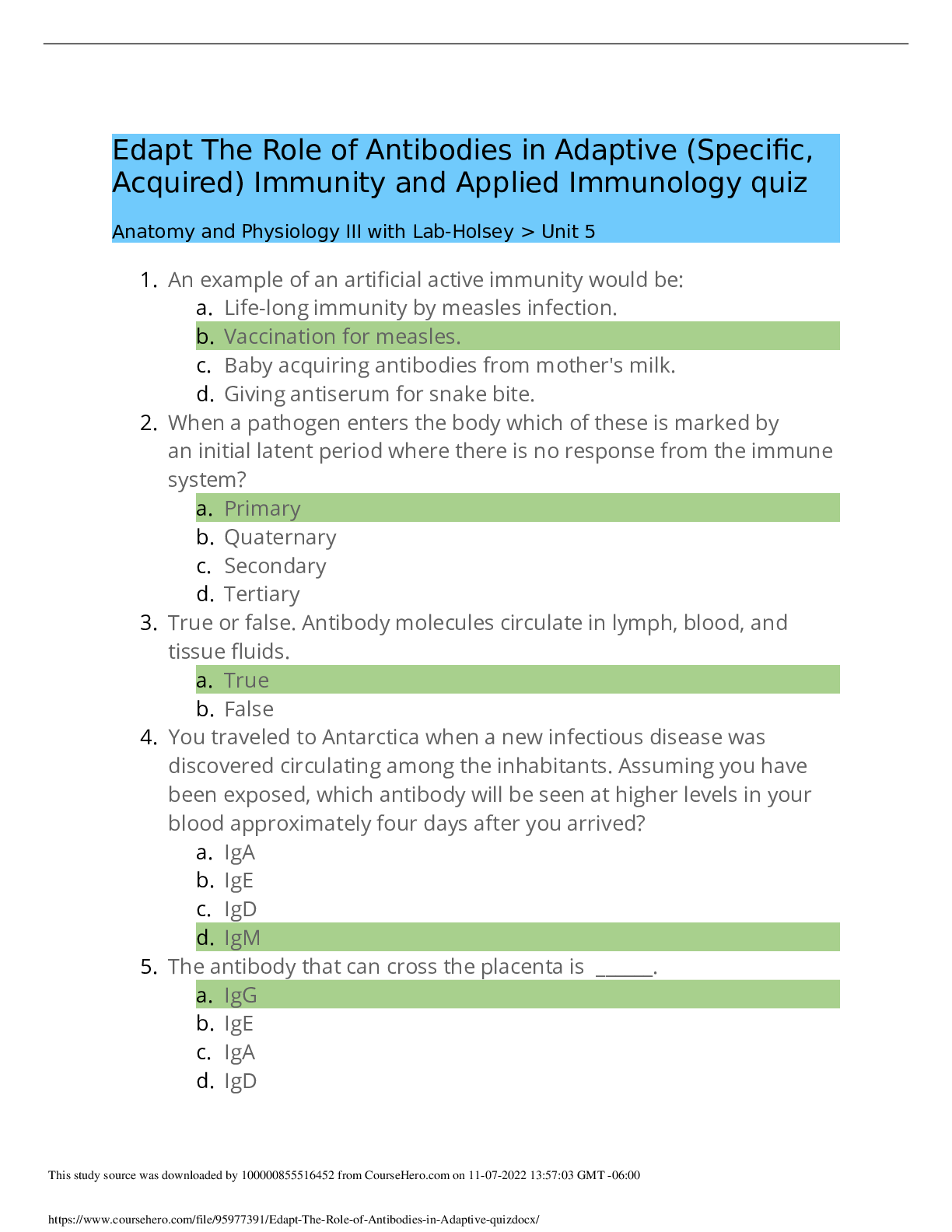
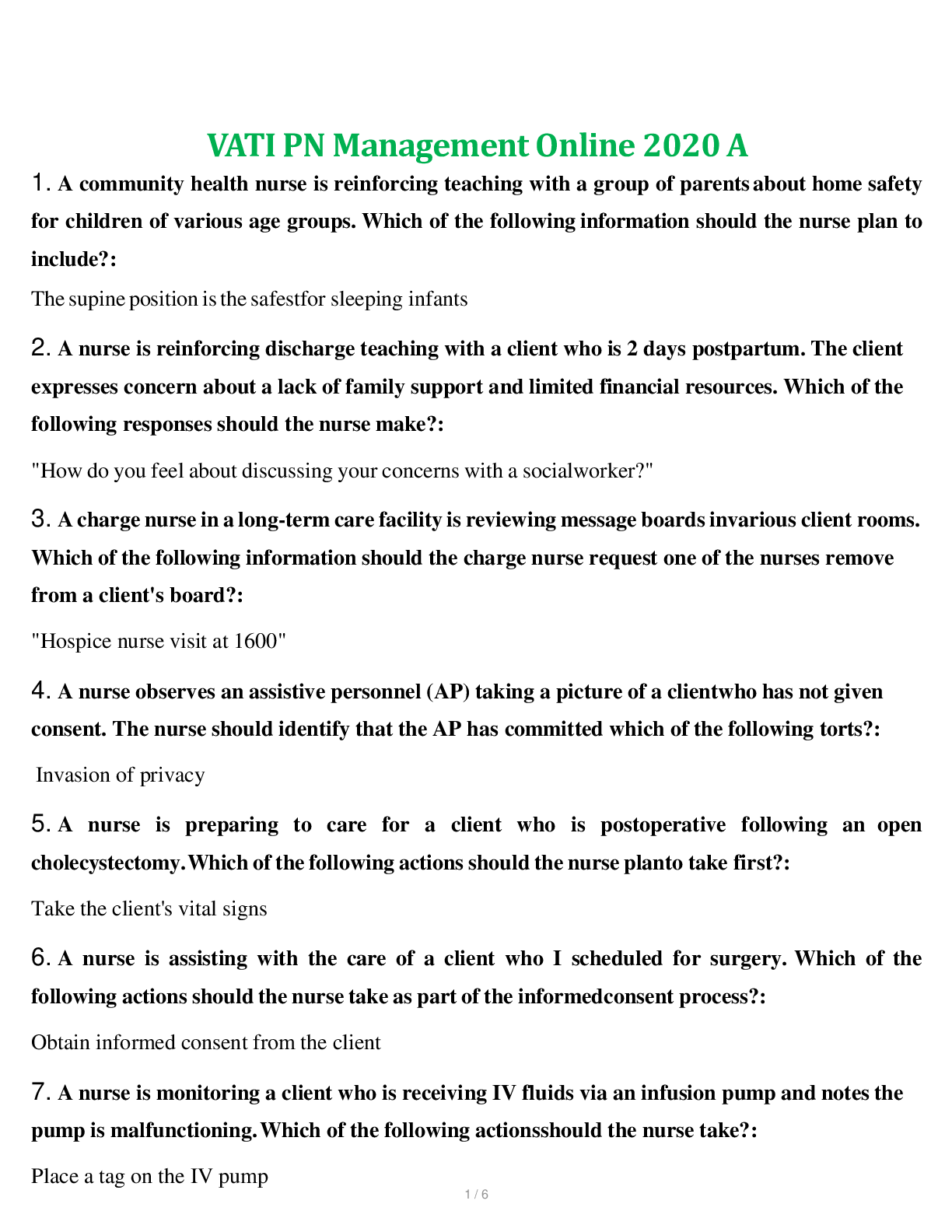
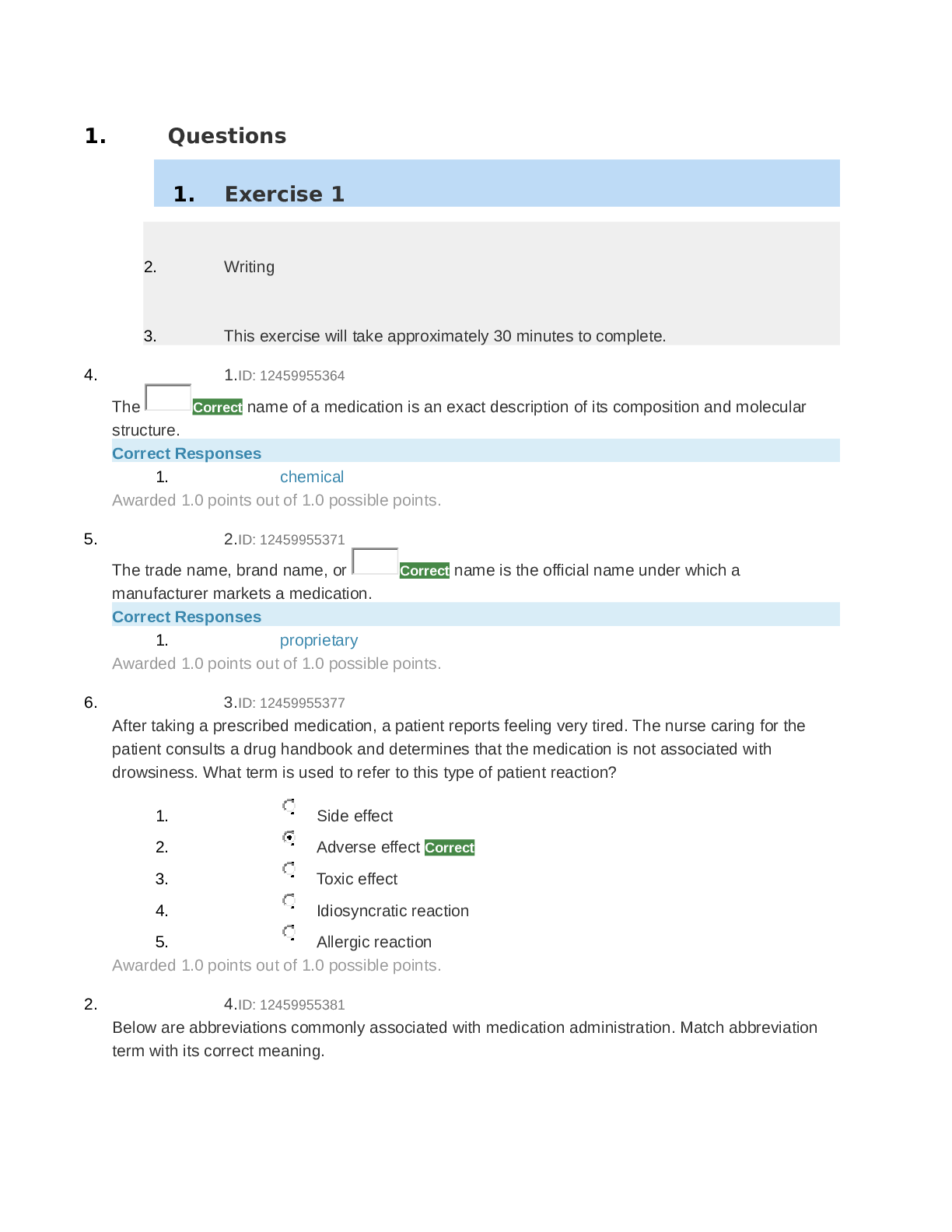

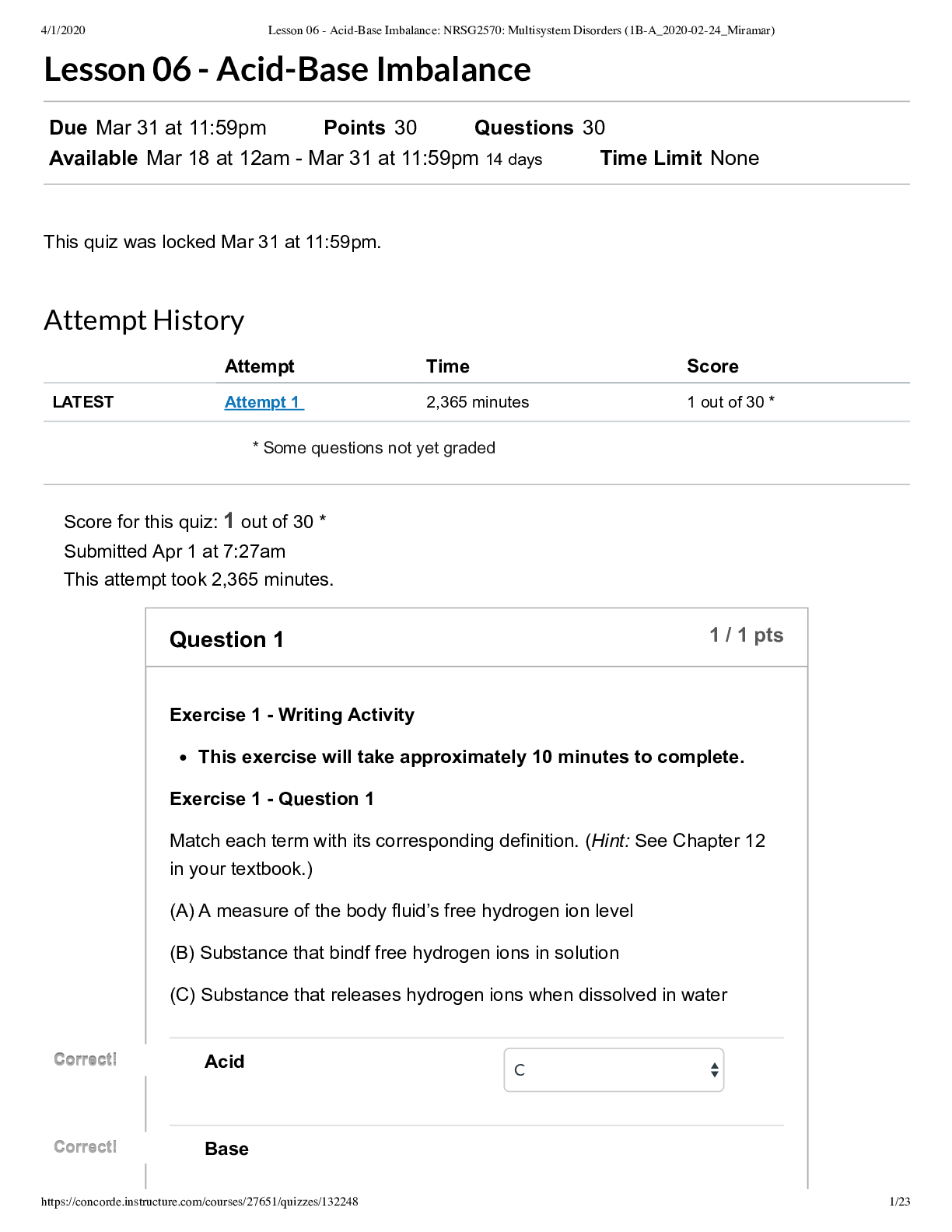


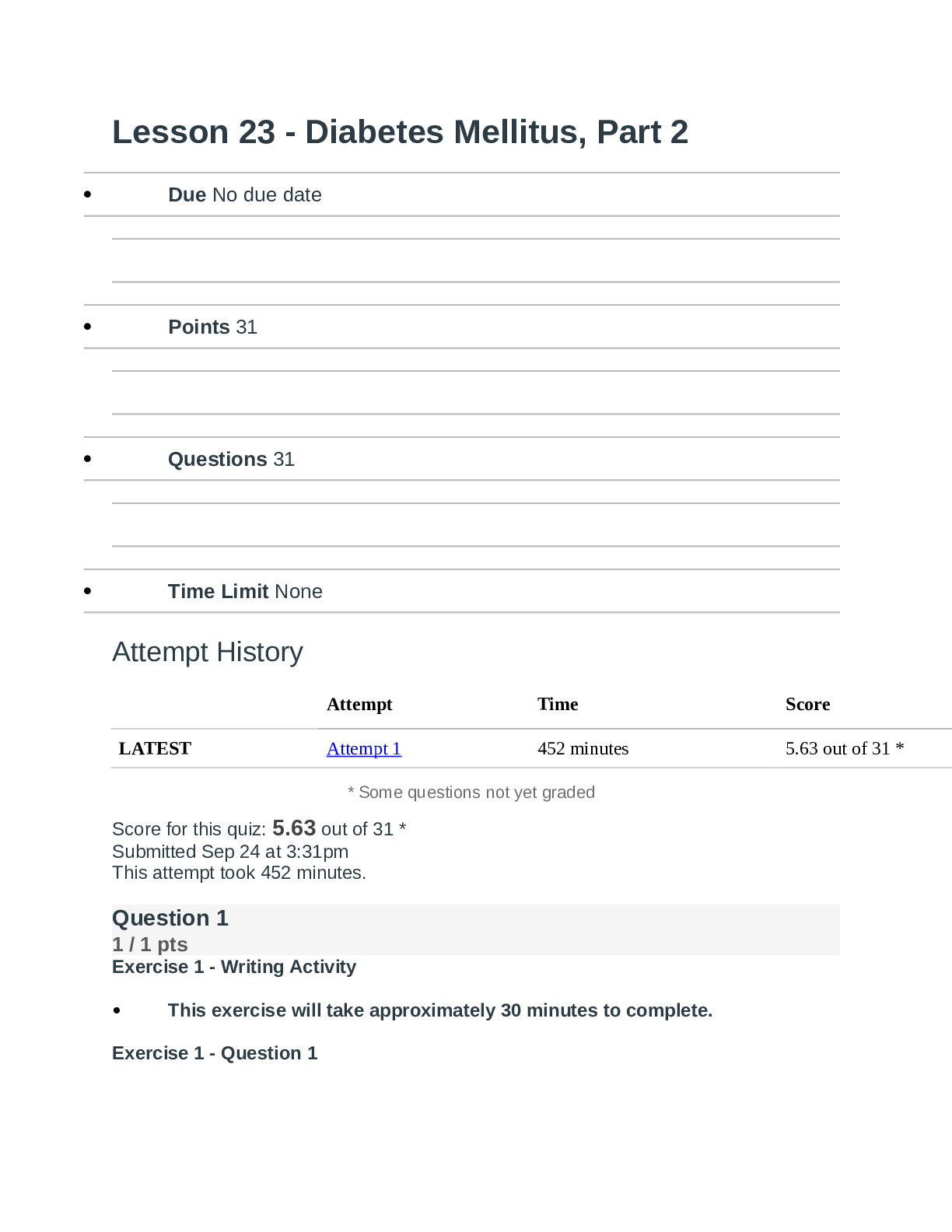
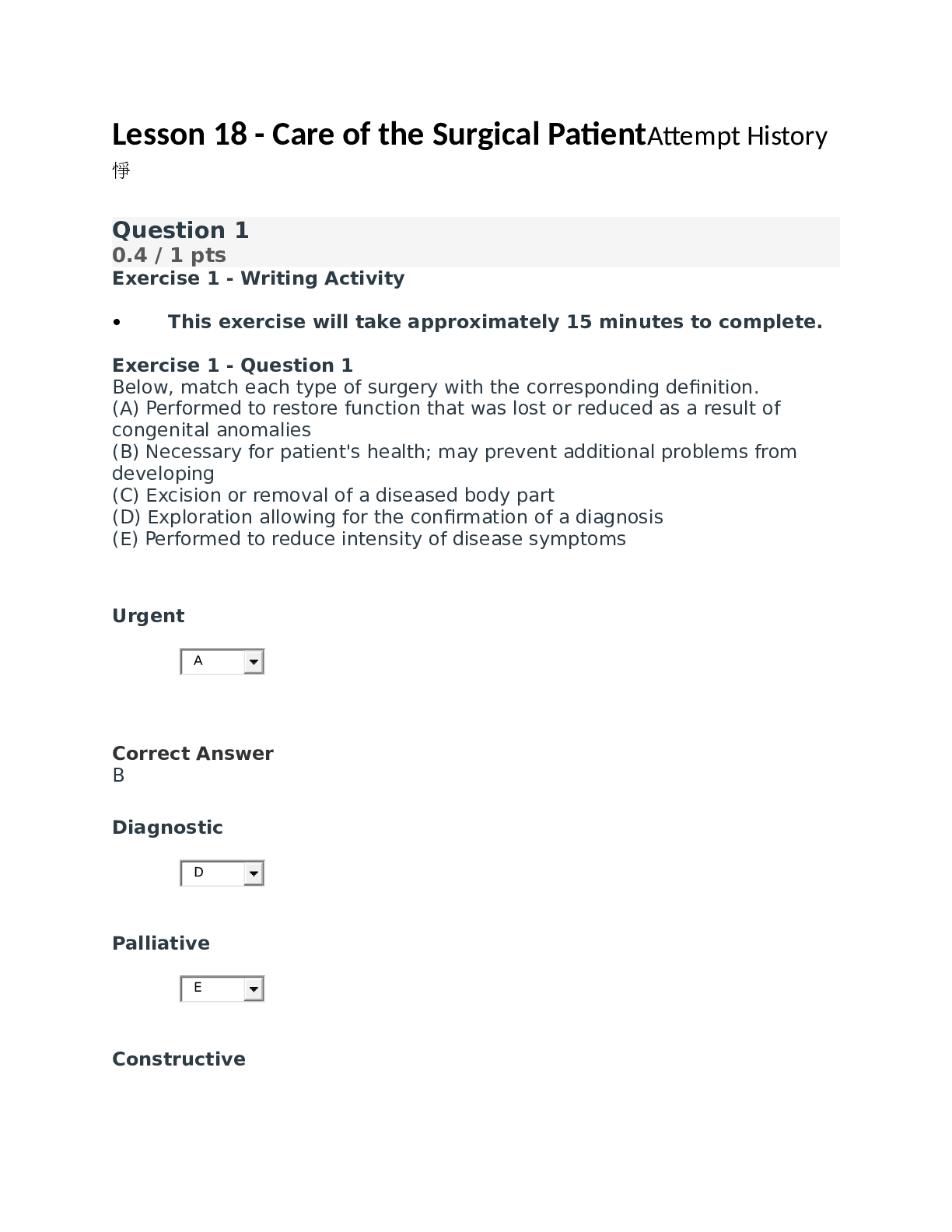
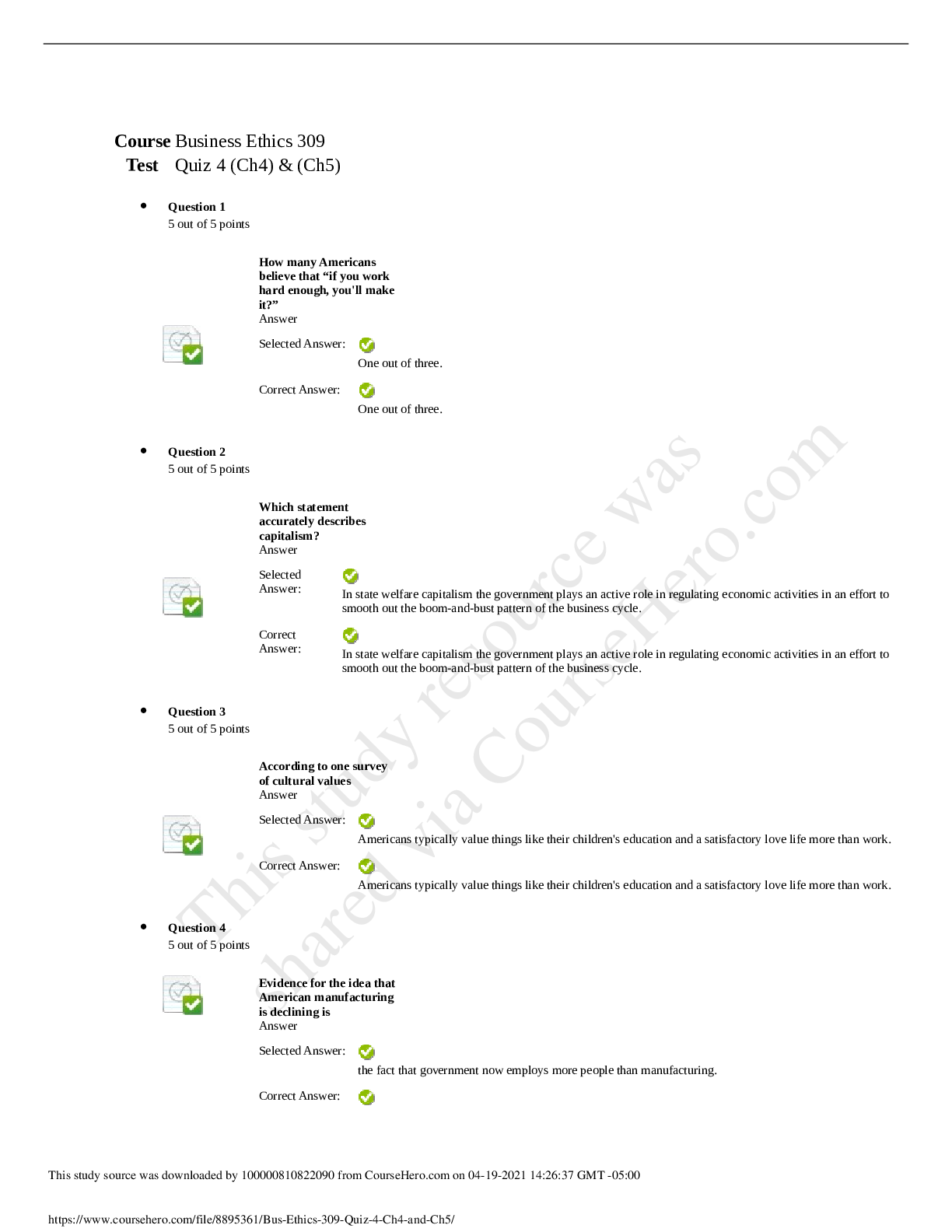

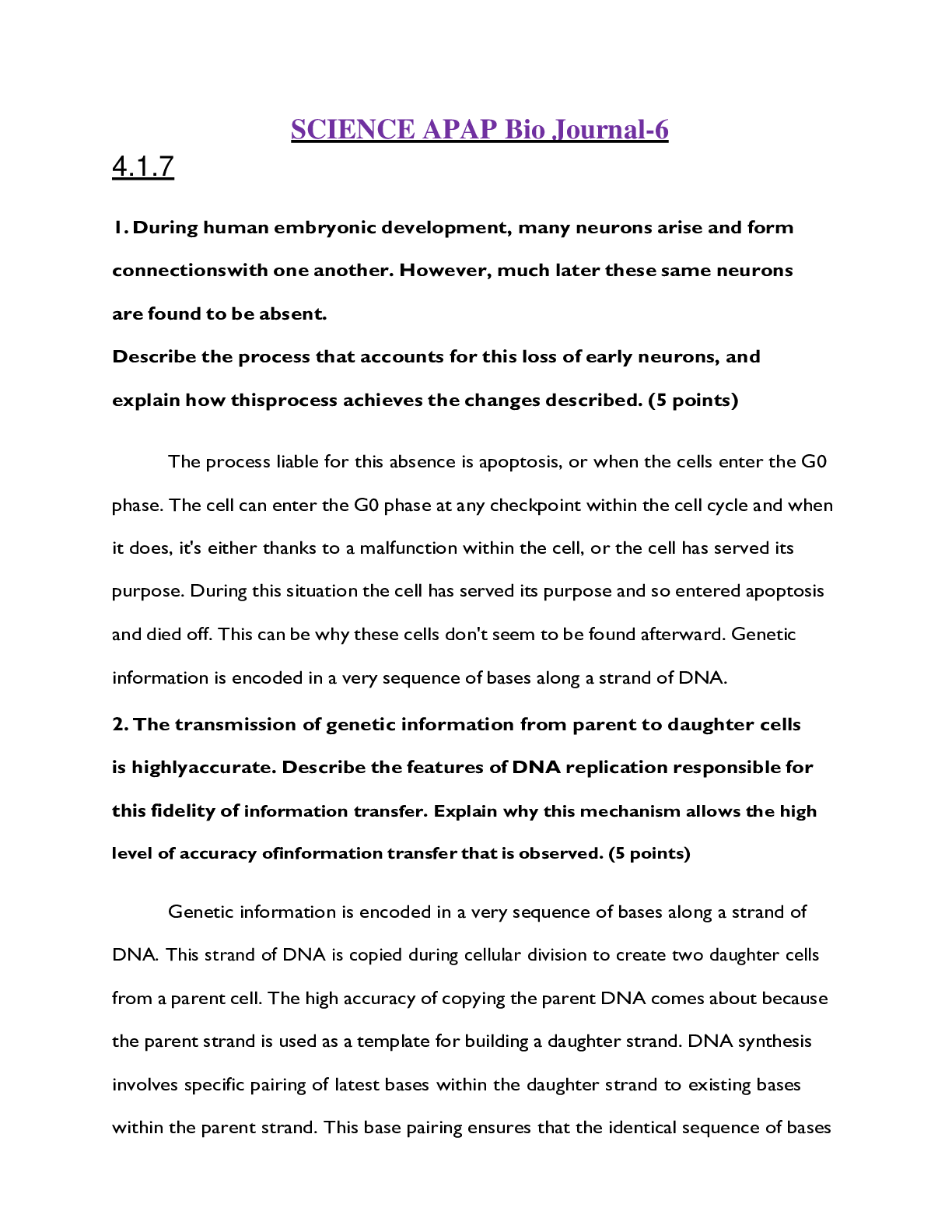
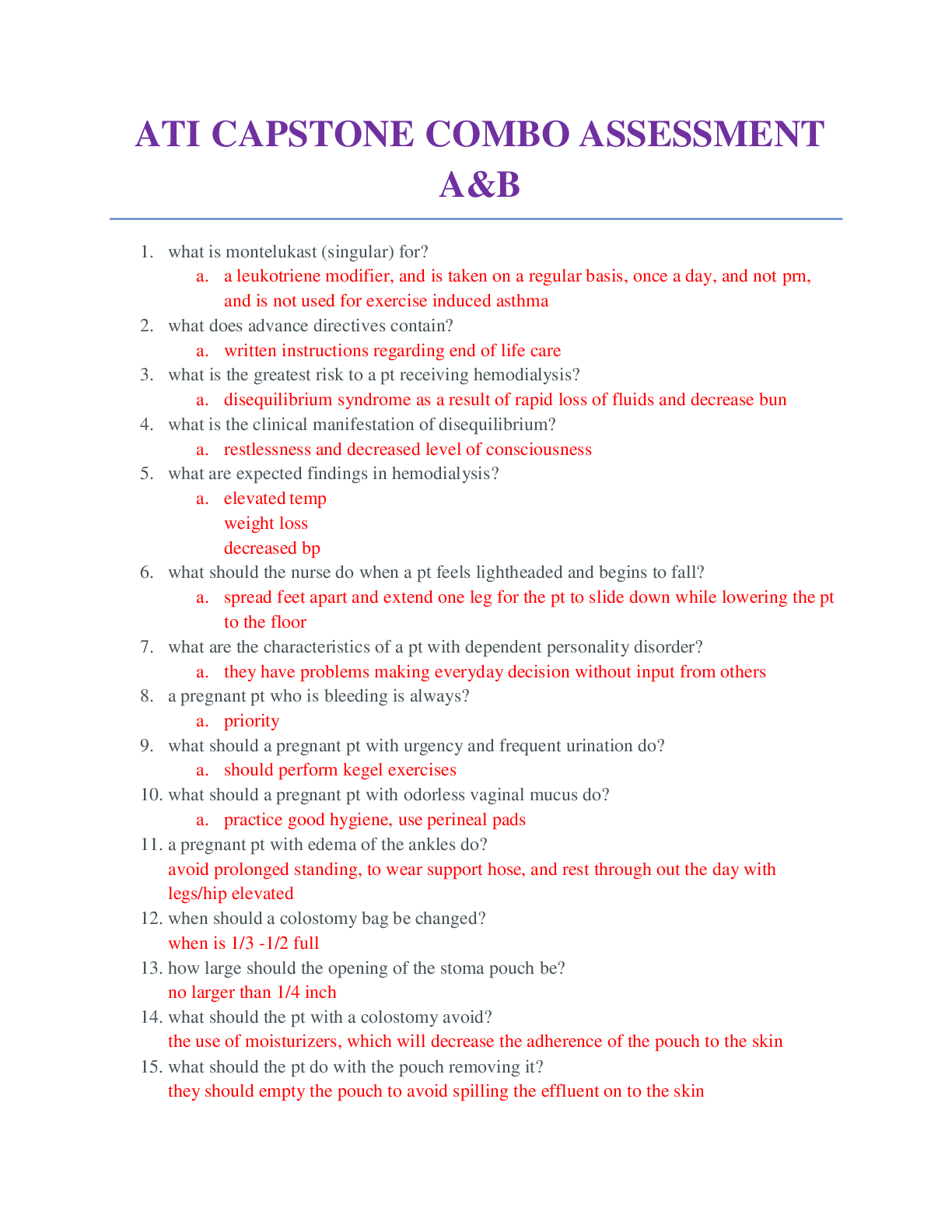
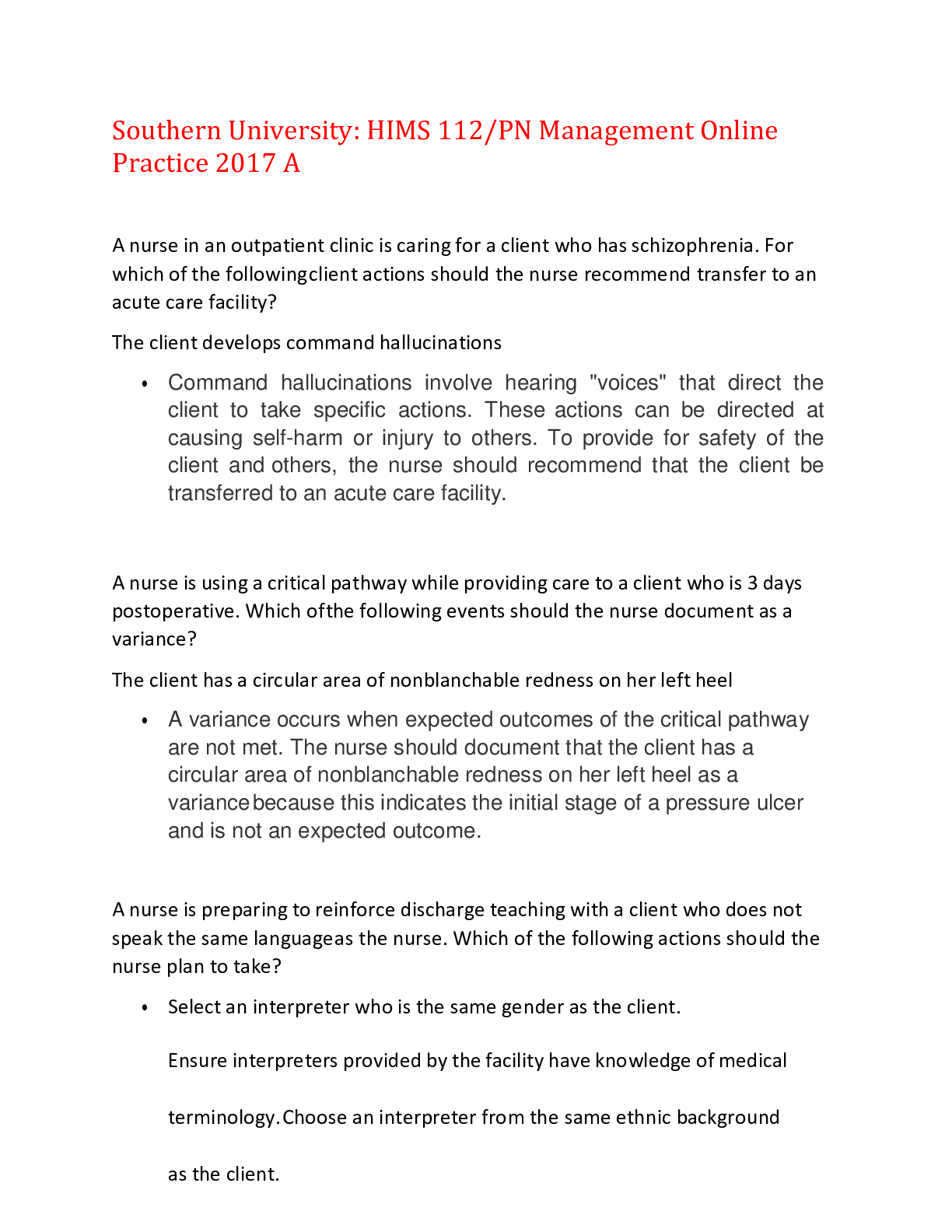
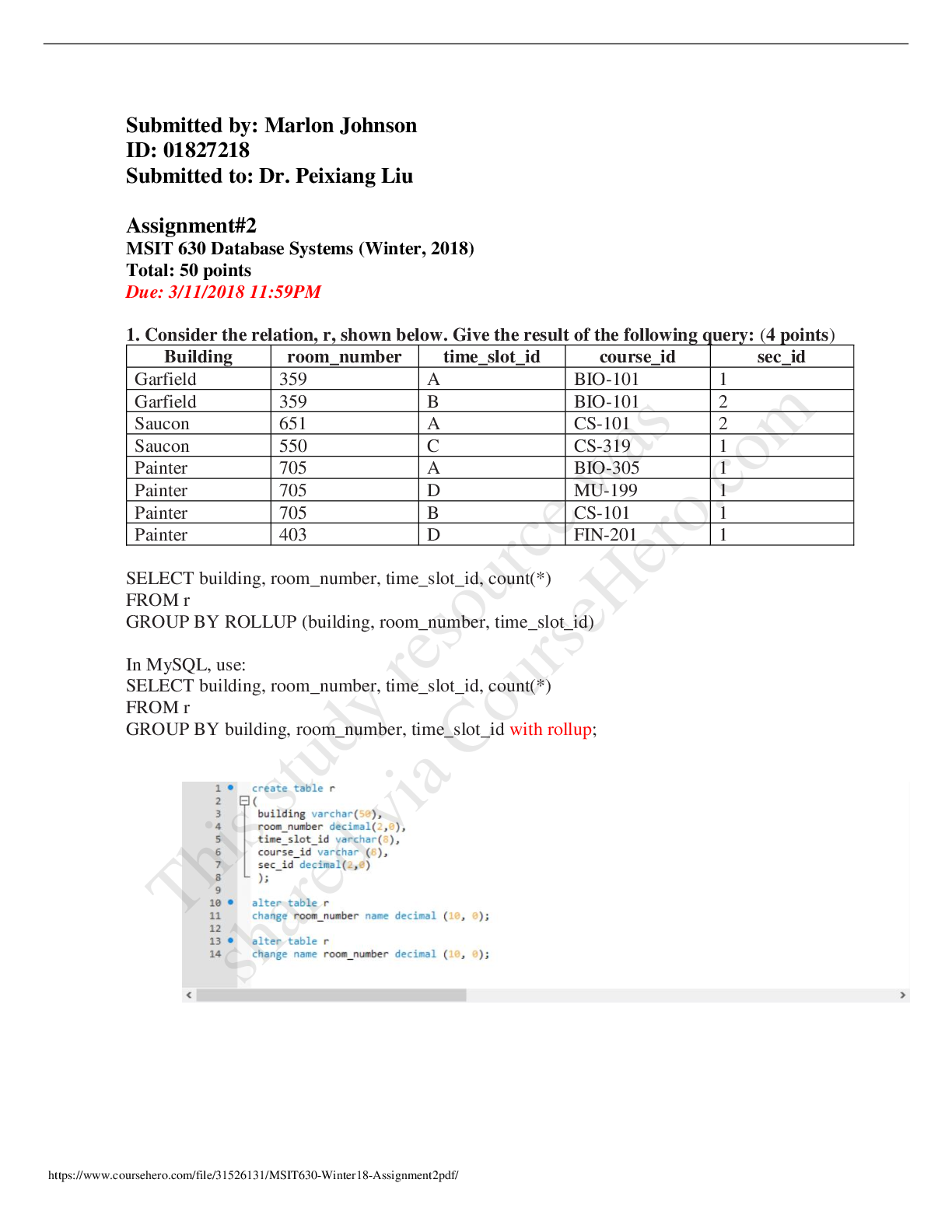

.png)
.png)
.png)

.png)


.png)
.png)
.png)






